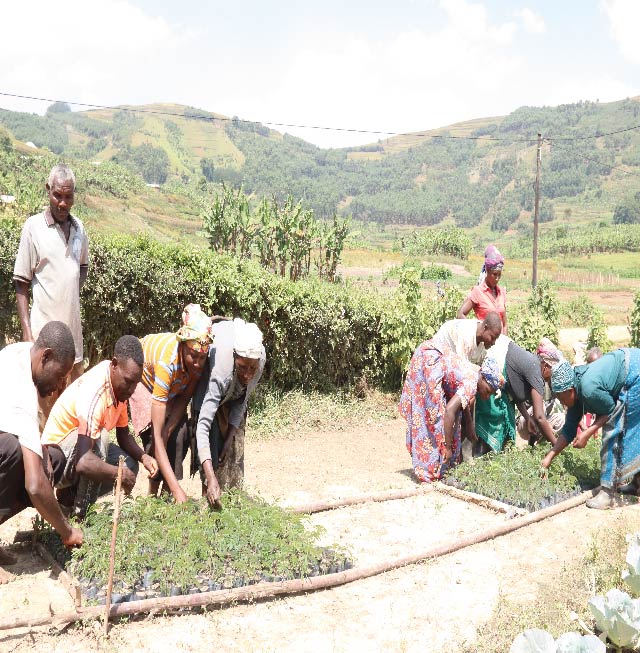Community Tree Nurseries Established to Address Climate Change Effects.
Uganda is susceptible to the effects of climate change. Climate change due to global warming is a function of anthropogenic factors, with the main driver in Uganda being land use change.
The impacts include changes in rainfall patterns and variability in temperatures, thus increasing pests and diseases, flooding, and landslides in parts of the country. The overall consequence is increasing poverty, famine, and food insecurity.
Degradation of the catchment areas has increased due to numerous human activities, which include human settlements, agriculture, and gravity flow water schemes, thus affecting the functionality of the ecosystems.
It is important to note that 41% of Uganda's total area is experiencing degradation, and 12% is in a severe state of degradation (CIAT et al., 2017).
To mitigate these challenges, the CommonGround Project under Pathway 2 has provided communities with skills on how to establish tree nursery beds to address the effects of climate change.
Furthermore, the project supported the communities with assorted materials for nursery establishment and management. These materials include seeds of various tree species, shade nets, fencing wire mesh for wheelbarrows, watering cans and spades, and spray pumps, among others.
The aim of the community tree nurseries is to improve and increase access to environmentally friendly tree seedings, including various indigenous tree species, for the restoration of degraded areas.
The seedling tree nurseries are centrally managed and owned by the community, with the aim of becoming a business enterprise and ensuring sustainability even after the project.
The training of tree nursery management committees happened in all the project implementation areas, where the communities received hands-on skills and knowledge from the experienced project staff and district forestry officers on tree nursery bed making and management.
The training focused on nursery site selection, nursery seed bed preparation, tree nursery design, soil mixtures, potting seed and seedling handling, tree seed sources, seed pre-treatment, seed sowing, pricking out, shading, watering, weeding, root pruning, hardening off, and seedling protection against pests and diseases.
In Kyatwa community, Kibiito town council in Bunyangabu district, community members expressed excitement about the tree nursery they established, explaining that, in the past, they had wanted to plant trees but did not know how to get the seedlings. They further revealed that with the skills they have acquired, they will ensure that they manage the tree nursery so that they gain from it.
Similarly, in Kaguma Community, located in Buheesi town council and Ntabago A and B communities in Kibito sub-county, community members expressed happiness because they had received the skills and had promised to continue working collaboratively to benefit from the tree nursery they had established.
Additionally, in Kagano community, located in Kanaba subcounty of Kisoro district, community members promised that they would manage their tree nursery to get quality tree seedlings, which they would plant and restore one of their degraded hills.
It was, however, noted that the community lacks water, a situation that they said may affect the raising of the tree seedlings in the nursery bed.
By Andrew Masinde – Communications Officer





